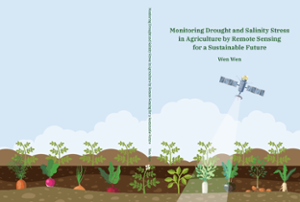Proefschrift
Monitoring drought and salinity stress in agriculture by remote sensing for a sustainable future
Food security is challenged by a growing global population and by climate change. Drought and soil salinity are considered the most important ones that inhibit crop yield and distribution. Worryingly, climate change is predicted to increase not only their frequency and severity, but also their co-occurrence, exacerbating their impacts. This also leads to increases in events where both stresses co-occur.
- Auteur
- W. Wen
- Datum
- 30 januari 2024
- Links
- Thesis in Leiden Repository

This co-occurrence results in substantially more yield losses than individual stressors. While detrimental effects of combined drought and salinity stress on crops have been highlighted in small-scale experiments (with only a limited number of crop varieties), large regional uncertainties remain for real-life agricultural settings. Satellite observations offer a promising perspective for enhancing global food security by providing reliable information on arable land extent and food production. Remote sensing has already been used to monitor crop productivity at multiple spatial and temporal scales, though not for yet characterizing crop growth under co-occurring drought and salinity stress. This thesis aims to assess the impact of drought and salinity on agriculture and sustainable development goals using remote sensing technology.
